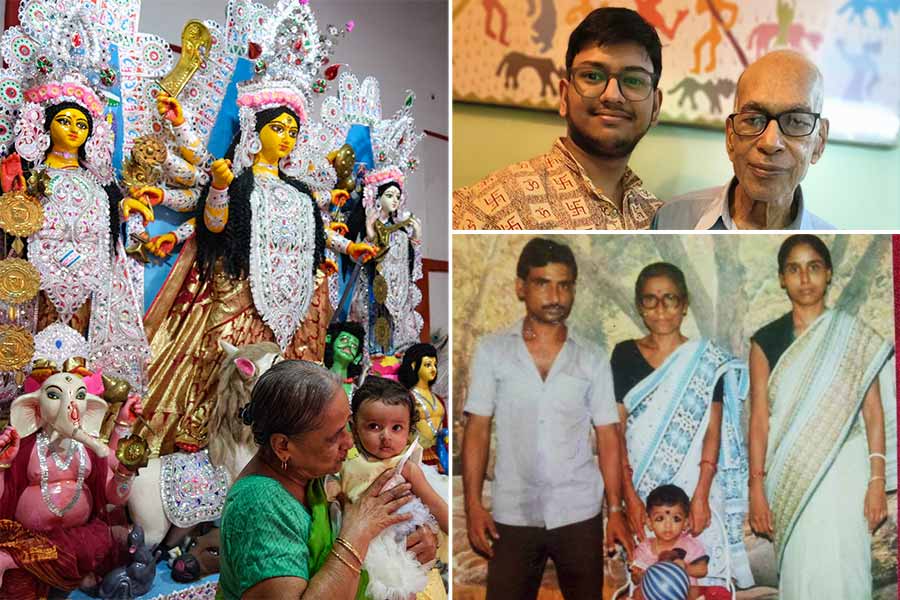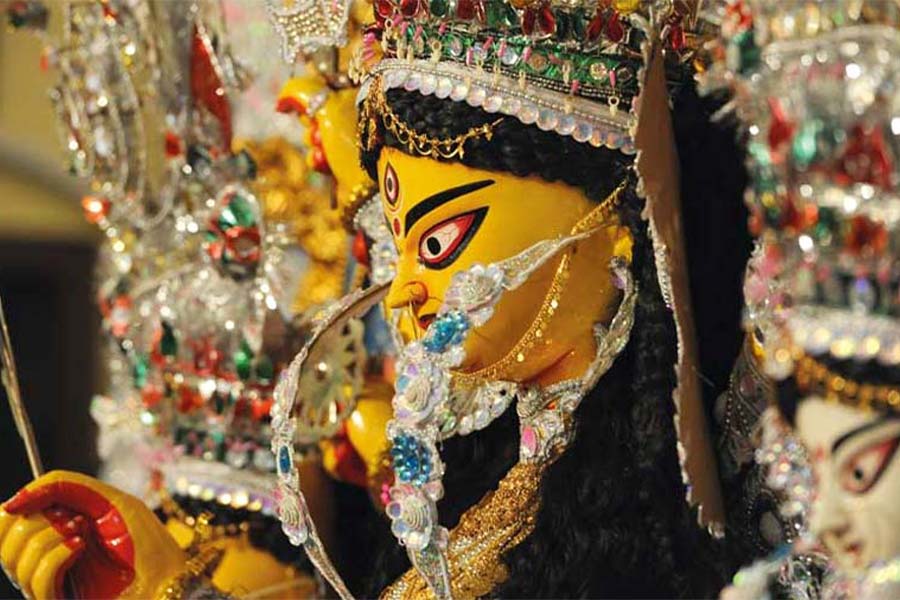The bond between a grandparent and a grandchild is a special one. It is a friendship like no other — a mutual admiration society of two where secrets of sneaking in chocolates to share and a few extra moments for bedtime story sessions are stowed away safely.
To celebrate this special bond and the festive spirit of Durga Puja, My Kolkata got in touch with two grandparent-grandchild duos to talk to them about their Durga Puja memories.
The bibliophile Amma and ‘nati’ duo
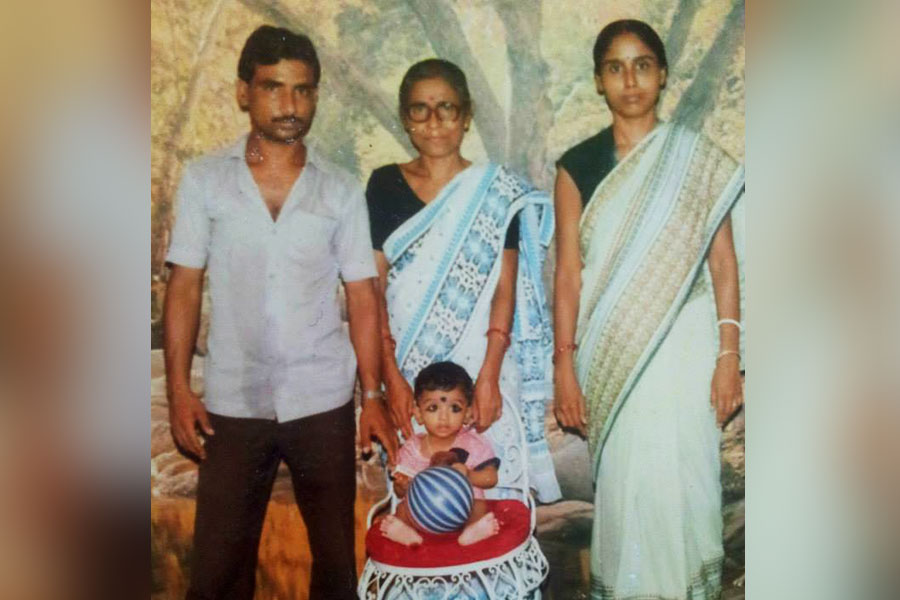
Arnab Deb as a child with his paternal grandmother (centre) Malina Deb and his parents Courtesy Arnab Deb
From reading the Saradiya Pujo Sankhya (Durga Puja specials) by various publications together when her grandson was a child, to now when the 30-something-year-old grandson gifts the Puja specials to his octogenarian thakuma — the love for books still ties this duo, and for them Durga Puja means reading the Saradiya Sankhya. For Amma Malina Deb and her nati Dodo (Arnab Deb) of Beleghata, another continuing tradition of Puja is Ashtami’s pushpanjali with the family, and spending the day with them with food and adda galore. While his Amma can no longer walk to the pandal, the Ashtami rituals start with meeting the great dame of Deb family, the matriarch with an incredible life journey who is synonymous to Devi Durga in this family.
Amma’s own Durga Puja memories depict a different Kolkata — one that paints a sepia-toned motion picture. “We used to set off on an ekka gari (horse carts) to see the pujos around. My elder brother was our guide and Sealdah was one of the stops,” reminisced Malina Deb, taking a trip to memory lane. Much later when her grandson was born, she used to take him pandal hopping, stopping at street-food stalls to meet the tantrums of little Dodo.
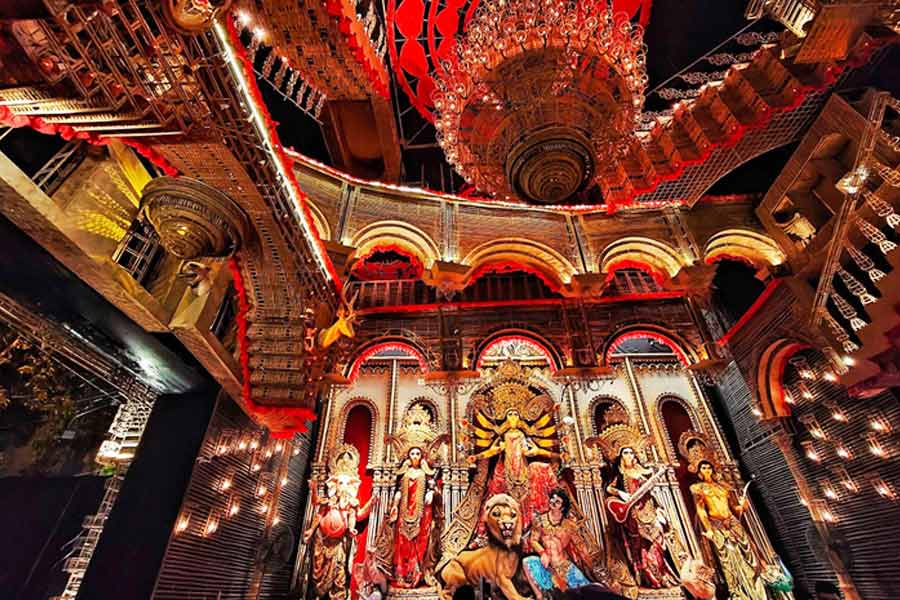
This year’s pandal at Singhi Park, which was a mainstay in the pandal-hopping itinerary for grandmother Malina and grandson Arnab Soumyajit Dey
As he looks back on the Durga Puja celebrations of his childhood in the 1990s, Arnab remembers the simplicity and rues its absence in today’s time. The playlist for parar pandal has changed, there are more flashy lights everywhere and theme pujas take precedence. His own cherished Puja memories have more everyday, simple things. “I remember one particular Mahalaya, waking up at 3am at baba’s call. I would sleep beside Amma. We woke up and listened to Birendra Krishna Bhadra’s Mahishasurmardini on our radio, as the dawn broke,” shared Arnab.
Puja shopping in the ’90s involved visiting local shops and tailored clothes. The most visited pandals were Ekdalia Evergreen and Singhi Park. While street food was a part of the menu, for Malina Deb, having special meals at home was the tradition. “Chhoto maachh diye chocchori aar boro maachher kalia — ei chilo khabar, (a dry preparation with small fry, and a curry with bigger fish — that was the menu)” shared Amma.
Today, Ashtami is planned around Amma. Her grandson makes it a point to stop at the bazaar to get fish for his grandma. The family sits together to share a meal, as the parar pandal’s speaker croons the latest melodies. If a song by Kishore Kumar or Mita Chatterjee plays, there is a different smile on everyone’s faces — a smile of familiarity and nostalgia. And the nati prays in his heart, “Please Ma, keep my Amma safe and healthy. Aschhe bochhor abar eso (return to us next year)…”
Chef ‘dadu’ and sous chef ‘nati’

Soumyabrata with grandfather Priyabrata Bhattacharjee Courtesy Soumyabrata Bhattacharya
Durga Puja for Soumyabrata Bhattacharjee is about family time, good food and entertainment. But what this 16-year-old enjoys the most is cooking with his dadu. “We share the same passion for cooking and trying out different cuisines. So during Durga Puja, when I have five days off from school, we cook together, enjoy the food and watch regional films,” said the Class XI student of Delhi Public School Ruby Park. His grandfather Priyabrata Bhattacharjee equally enjoys his grandson’s company during the festival. Now 80, he depends on his son and grandson to take him out for puja parikrama in the car or rickshaw from their Golf Green home. However, years back during his sprinting years, when Priyabrata lived in Jharkhand’s Kumardubi, he would travel to his hometown of Durgapur to visit pandals — “Our pujo began on Saptami and I would go out with my family, and occasionally some friends, to see the idols at different pandals in Durgapur.”
Like most Bengali families, Priyabrata’s Mahalaya ritual was joining his family to listen to Mahishasurmardini by Birendra Krishna Bhadra over a cup of tea at 4am. “We stayed up all night to tune into the radio for the programme,” he shared.
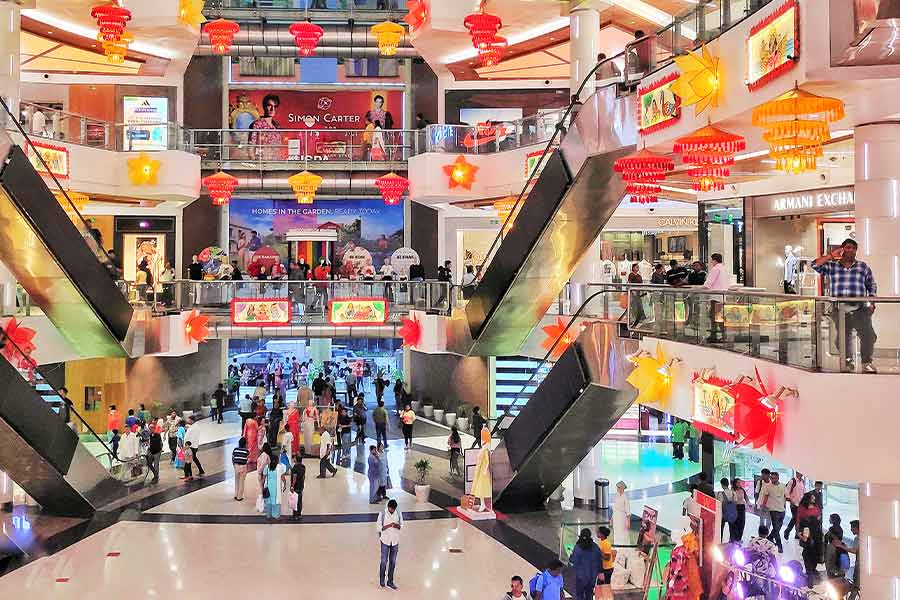
A decked up South City Mall, where grandfather Priyabrata and grandson Soumyabrata usually do their Durga Puja shopping Soumyajit Dey
On the other hand, grandson Soumyabrata sometimes finds it difficult to be a part of the Mahalaya ritual, since he has to attend school in the morning, but “if it is a holiday, I definitely listen to the radio with my family,” he said. Given a busy academic schedule, the Durga Puja vacation is leisure time for Soumyabrata who starts planning for Puja two weeks in advance. He begins with shopping for clothes from online stores and South City Mall. Notun jama also comes from family and relatives, just like his dadu’s used to. But now both grandfather and grandson get their pujo shopping done from malls.
Sharing more about his Durga Puja nostalgia, Priyabrata remembers staying at home worshipping goddess Adya Ma during Durga Puja. “I still worship Adya Ma during Durga Puja. That is one tradition I have maintained,” he said. Soumyabrata has his own puja tradition too. “I offer pushpanjali on Ashtami and that’s a tradition I follow every year,” explained Soumyabrata.
Almost 64 years apart, individually, this grandson and grandfather see Durga Puja differently, but their spirit is the same. Rituals and memories might evolve or fade, but they wish to spend Durga Puja together for years to come.
